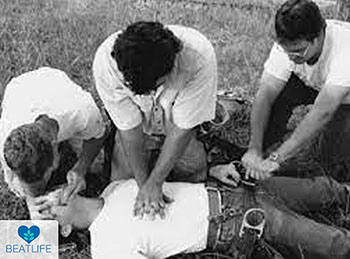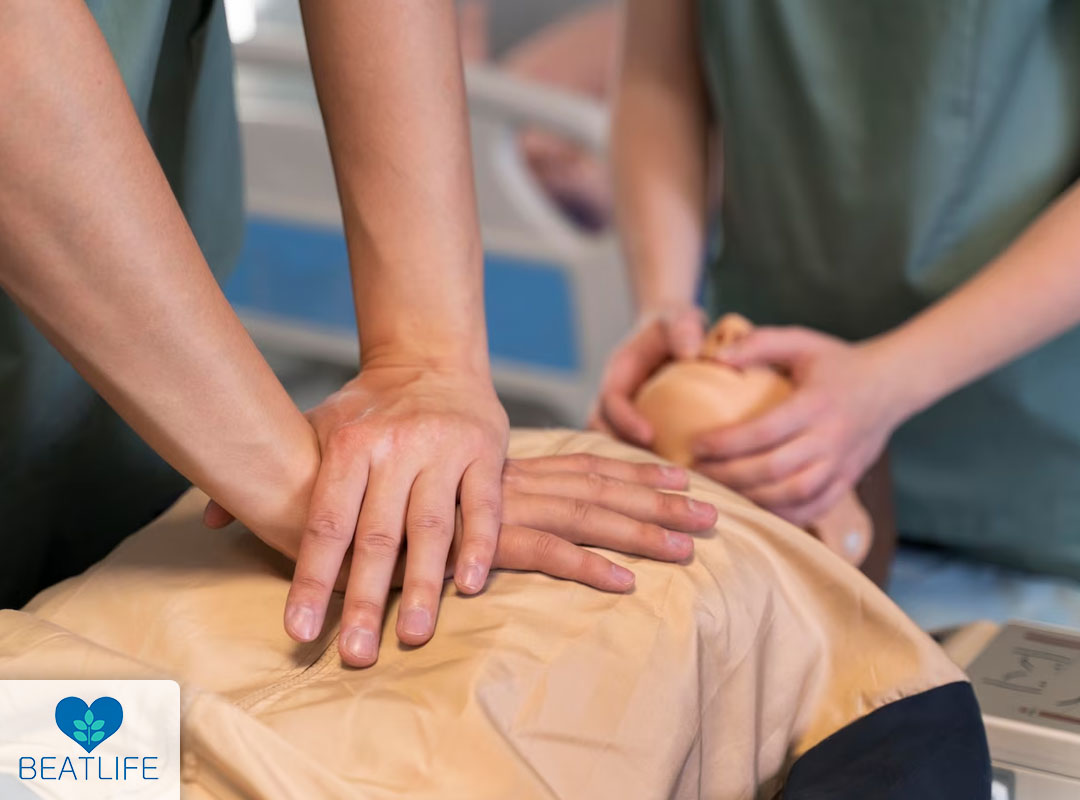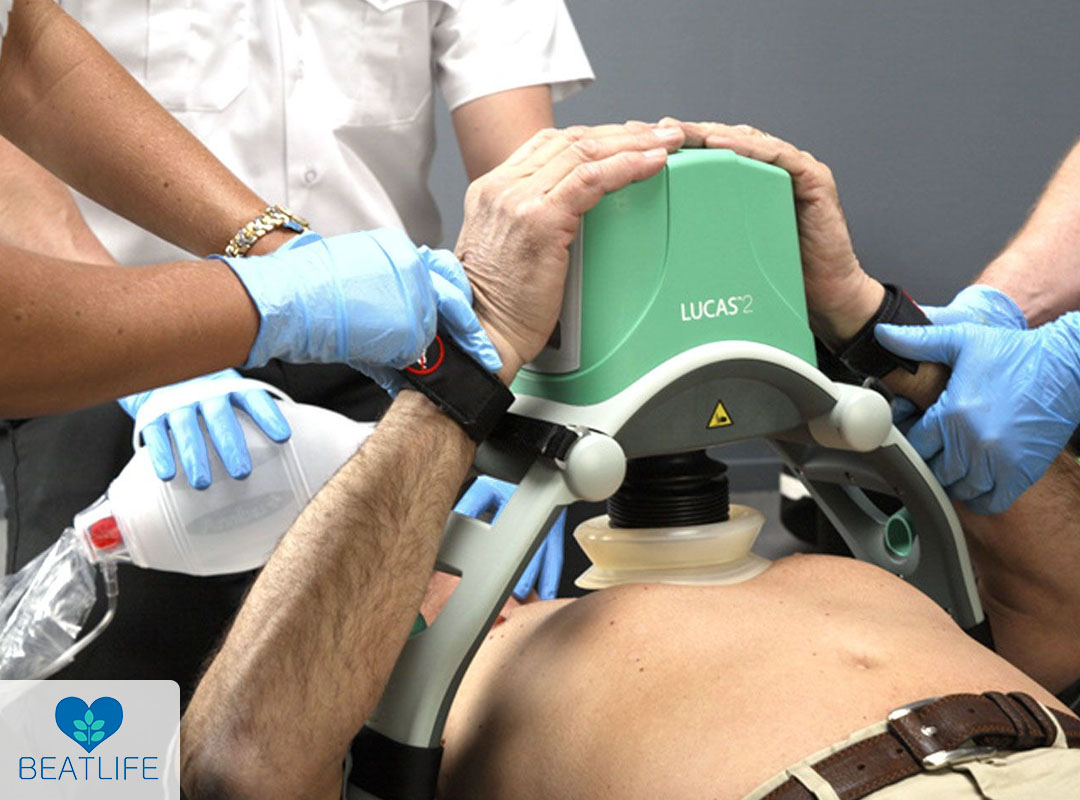Cardiopulmonary Resuscitation’s (CPR) historical development is evidence of advancing medical knowledge and emergency response methods. Critical life-saving measures like CPR have transcended time and place, leaving a lasting impression on the course of medical history. This article explores the complex history of how CPR came to be, when was CPR invented, tracing its origins, defining it, tracing its evolution, and offering light on the technological developments that have influenced its current usage.
CPR is, at its core, a medical technique used to revive people in cardiac arrest or severe respiratory distress. CPR has come a long way over the ages thanks to the innovative work of doctors and researchers who attempted to understand the causes of cardiac and pulmonary arrest. This story opens with a look into the definition of CPR itself, revealing the exact significance of this life-saving abbreviation and its effects on emergency medical care.
Following that, we set out on a historical journey, tracking the development of CPR from its simple beginnings to its sophisticated state today. This journey through time reveals significant turning points and notable people who have helped make CPR an essential part of contemporary medical practice. We also explore how technology has changed the field of CPR, illuminating the instruments and technologies that have increased its effectiveness and accessibility, like the CPRmeter tools provided by the BEATLIFE company. Through this thorough examination, we seek to provide readers with an extensive understanding of CPR’s historical development and its continuing importance in modern healthcare.

Contents
History of CPR
When was CPR invented is an interesting question. Cardiopulmonary Resuscitation (CPR) has a unique history that spans decades and is a product of the tenacious work of forerunners in medicine. Basic techniques for reviving the unconscious go back to ancient times when CPR started. However, more organized strategies didn’t appear until the 20th century.
Dr. Friedrich Maass made early efforts at external chest compressions. However, Dr. William T. Kouwenhoven’s introduction of closed-chest cardiac massage and confirmation of its efficiency in preserving blood circulation after cardiac arrest significantly advanced in the 1960s. This represented a change from invasive open-chest techniques.
Drs. Peter Safar and James Elam significantly broadened CPR’s application by focusing on mouth-to-mouth resuscitation as an artificial breathing technique. Their research emphasized how crucial it is to combine chest compressions with ventilation for efficient resuscitation.
By incorporating chest compressions, artificial ventilation, and the “ABC” technique while standardizing protocols, the American Heart Association (AHA) played a critical role in developing CPR. The aforementioned efforts standardized resuscitation procedures and promoted broad CPR instruction, reaffirming its central position in contemporary emergency medical care. The history of CPR is evidence of its commitment to devoted innovation, teamwork, and life-saving.

What does CPR mean?
The crucial medical treatment known as cardiopulmonary resuscitation (CPR) has a name that accurately describes its main goals. The term “Cardiopulmonary” emphasizes its combined focus on the heart (“cardio”) and the lungs (“pulmonary”), while “Resuscitation” emphasizes its essential function in restoring vital functions in the face of life-threatening medical situations. CPR is a precisely planned technique for people experiencing cardiac arrest or severe respiratory distress to ensure enough oxygenation and restore spontaneous circulation.
A straightforward technique that combines chest compressions and artificial ventilation is the basis of CPR. Chest compressions restore blood flow by mechanically simulating the heart’s natural pumping motion. In addition, sophisticated airway management or mouth-to-mouth resuscitation can be used to give artificial ventilation, which keeps the lungs’ oxygen supply stable, a requirement for cellular respiration. By efficiently addressing the emergency’s cardiac and respiratory aspects, this dual strategy elevates CPR to the status of an all-inclusive life-saving technique.
Understanding human anatomy, physiology, and the underlying pathophysiology of cardiac arrest and respiratory failure profoundly is necessary for proficiency in CPR. Quickly assessing the patient’s state, recognizing vital signs, and starting CPR without delay are all critical skills. Between the commencement of a life-threatening emergency and the arrival of expert medical assistance, CPR acts as a vital link in the chain of survival by offering urgent intervention. As a result, it dramatically raises the chances of neurological recovery and survival for people dealing with serious medical problems, reinforcing its crucial position in contemporary emergency medicine.
In cases of cardiac arrest or severe respiratory distress, to perform CPR efficiently, take the following actions: Start by determining the safety of the area and the victim’s level of response. Contact emergency services immediately if an individual is unresponsive and not breathing regularly. Then, do chest compressions by placing the heel of one hand on the victim’s chest’s center and the top of the other hand. Compress the chest at 100–120 compressions per minute, at least 2 inches deep.
After performing 30 chest compressions, perform two rescue breaths by leaning your head back, putting your lips over the victim, and breathing so the chest rises. Till expert aid arrives, the sufferer begins breathing normally, or you are physically unable to continue, repeat this cycle of 30 compressions and 2 breaths. Remember that CPR is a vital intervention that greatly increases the likelihood of survival in emergencies.

The beginning of CPR
Cardiopulmonary Resuscitation (CPR) has roots in the middle of the 20th century, with significant advancements in the US. The invention of mouth-to-mouth resuscitation dates back to the 1950s, when American physician Dr. James Elam and Austrian anesthesiologist Dr. Peter Safar worked together. Their research underscored the importance of giving those experiencing respiratory distress artificial ventilation. At the time, getting enough breaths was the main goal of the suggested ratio of compressions to ventilations.
American surgeon Dr. William T. Kouwenhoven and his associates revolutionized CPR techniques in the early 1960s. They developed a technique known as closed-chest cardiac massage, which utilized external chest compressions without invasive treatments. This method proved successful at preserving blood flow during cardiac arrest. Chest compression-to-ventilation ratios were not as uniform as they are now.
It took some time before the American Heart Association (AHA) and other healthcare organizations started to develop more exact CPR standards, including precise compression-to-ventilation ratios. The “30:2” ratio, which the AHA first introduced in the early 2000s and recommends for adult CPR, places 30 chest compressions before two rescue breaths. By giving medical professionals and bystanders a standardized and evidence-based framework for conducting this life-saving technique, these discoveries constituted a crucial turning point in the history of CPR.
Timeline of the development of CPR
the exact answer to the question “ When was CPR invented? ” is unclear. Cardiopulmonary Resuscitation (CPR) was created in Europe between the 16th and 18th centuries; however, it also has roots in other eras and countries. The Bellows Method, an early type of artificial respiration, was introduced by Swiss physician Paracelsus in the 16th century. However, the success of mouth-to-mouth resuscitation in Scotland in 1732 led surgeon William Tossach to highlight the need for more organized methods in the 18th century. In 1740, the Academie des Sciences in Paris formally advised mouth-to-mouth resuscitation for drowning victims.
The establishment of groups like London’s Royal Humane Society in the late 18th century underscored the significance of resuscitation efforts. Experiments conducted in 1775 by Danish veterinarian Peter Abildgaard showed that chest compressions might restart a heartbeat. Although open-heart massage remained the norm, the Hall and Silvester procedures gained popularity in the 19th century.
So, the exact date ” When was CPR invented ” is unknown; however, the modern method was invented by Drs. Kouwenhoven, Safar, and Jude in the 1960s by combining mouth-to-mouth breathing with chest compressions. The American Heart Association (AHA), established in 1924, was crucial in advancing CPR and urgent cardiovascular treatment. CPR continued to develop with the AHA’s assistance, becoming established as a crucial life-saving practice with ongoing improvements in standards and techniques over time.

CPR technologies
In order to increase the efficiency of cardiopulmonary resuscitation (CPR) and improve outcomes for those experiencing cardiac arrest, CPR technology has undergone a substantial evolution. One noteworthy innovation is the CPRmeter, a device created to help medical professionals and first responders do high-quality CPR. Rescuers can maintain the recommended standards for efficient chest compressions with the help of the CPRmeter, which provides real-time data on compression depth, rate, and recoil.
Another crucial technology is automated external defibrillators (AEDs), portable devices that can analyze a person’s heart rhythm and administer an electric shock if necessary to restore a normal heartbeat. AEDs are frequently used with CPR and are widely accessible in public areas, making them reachable bystanders in emergencies.
Additionally, digital and online platforms have been embraced by CPR training and certification programs, allowing people to learn and practice CPR methods through interactive simulations, films, and virtual scenarios. These online training resources provide a practical and efficient approach to introducing CPR to a larger audience.
In addition, smartphone gadgets and mobile applications offer CPR instructions, such as metronomes, that support maintaining the proper compression rate and depth. In an emergency, these apps can be helpful tools for qualified healthcare professionals and regular people.

